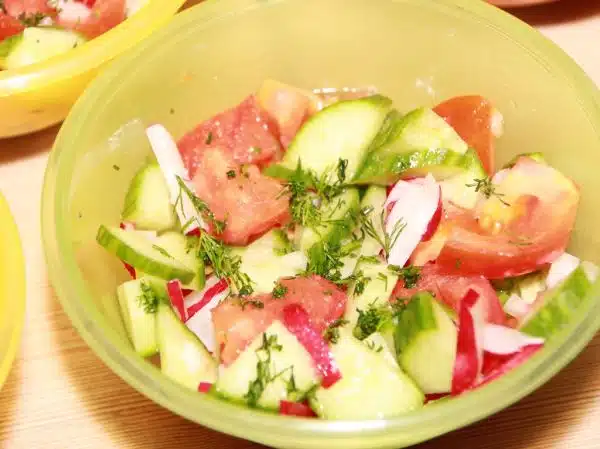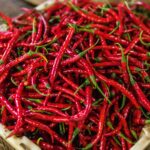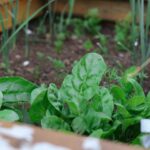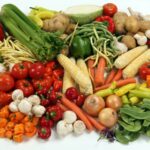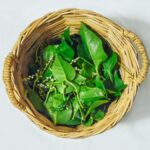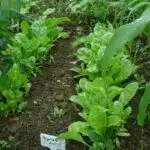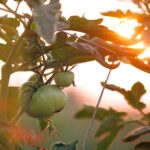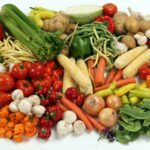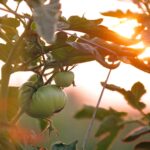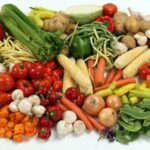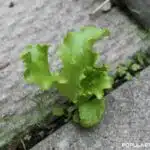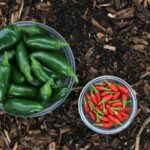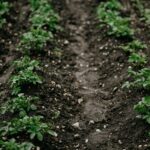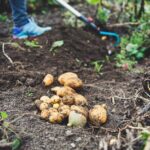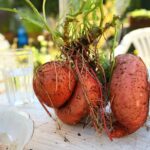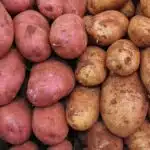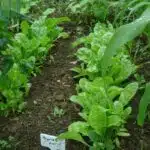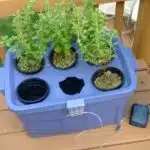Growing vegetables in containers is a convenient and space-saving way to cultivate fresh produce at home. Container gardening is ideal for city dwellers, apartment renters, or anyone who has limited outdoor space, as it allows you to grow plants on balconies, patios, rooftops, or even indoors. With the right soil mix, container size, and watering schedule, you can successfully grow a variety of vegetables in pots.
In this article, we will discuss tips for growing 10 types of vegetables in containers. From tomatoes and peppers to lettuce and herbs, we will cover the basics of container gardening and provide expert advice on how to grow healthy and productive plants. Whether you are a beginner or an experienced gardener looking to expand your skills, these tips will help you achieve a bountiful harvest of fresh and tasty vegetables from your own container garden.
Tomatoes
Tomatoes are one of the most popular vegetables grown in containers. They require adequate sunlight, water, and nutrients to grow successfully. However, proper pruning techniques can make a significant difference in their yield. Pruning involves removing the suckers, which are the small shoots that grow between the main stem and branches. By doing so, you will allow the plant to focus its energy on producing more fruit rather than foliage.
Common pests and diseases that affect tomatoes include aphids, whiteflies, and blight. Aphids are small insects that feed on new growth and cause leaves to curl or yellow. Whiteflies are tiny white insects that also feed on new growth, leaving a sticky residue behind. Blight is a fungal disease that causes leaves to wilt and turn brown. To prevent these issues, it’s essential to keep your tomato plants healthy by providing them with enough water and nutrients.
To ensure a bountiful harvest, it’s crucial to check your tomato plants regularly for any signs of pests or diseases. Early detection can prevent an infestation from spreading and causing irreparable damage to your crop. By implementing proper pruning techniques and being vigilant about pest control measures, you can enjoy fresh tomatoes from your container garden throughout the growing season. In the next section, we will discuss tips for growing peppers in containers.
Peppers
- When selecting pepper varieties for container gardening, consider the space available for the containers and the amount of sunlight the peppers will receive.
- Peppers should be planted in well-draining soil and watered regularly to ensure that the plants remain healthy.
- Fertilizing the soil regularly and adding mulch can help the peppers grow and produce more fruit.
- To protect the peppers from disease, it is important to practice good sanitation, such as removing any diseased plants and avoiding overcrowding.
Choosing Pepper Varieties
When it comes to growing peppers in containers, choosing the right variety is crucial. There are a plethora of pepper varieties to choose from, each with its unique flavor and heat level. Some popular varieties include bell peppers, jalapeno peppers, habanero peppers, and Thai chili peppers. The choice ultimately depends on your taste preferences and growing conditions.
Consider the growing conditions before selecting a pepper variety for container gardening. Some pepper plants thrive in full sun while others prefer partial shade. Ensure that you provide the optimal temperature range for your chosen variety as extreme temperatures can damage or stunt their growth. Additionally, select a container size that accommodates the mature plant size of your chosen pepper variety and use well-draining soil type for best results.
Harvesting techniques also vary depending on the type of pepper plant you’re growing. For example, bell peppers should be harvested when they turn fully ripe and have reached their mature size, while hot peppers like jalapenos and habaneros are typically harvested when they’re still green. Be careful when harvesting hot peppers as they can cause skin irritation if not handled properly. Pay attention to these details to ensure you get the best possible yield from your container garden.
Planting And Caring For Peppers
Peppers are a popular vegetable crop that can be grown in containers, making them suitable for urban gardening or limited space. Growing peppers in containers allows gardeners to have control over the growing conditions and provides convenience when it comes to caring for the plants. When planting peppers, it’s important to select the right container size and soil type to ensure optimal growth. Peppers have different requirements when it comes to temperature, sun exposure, and moisture levels, so paying attention to these factors is crucial.
Once the pepper plants are established, proper care is necessary to ensure a bountiful harvest. One important aspect of caring for pepper plants is watering them regularly but not excessively. Overwatering can lead to root rot and other diseases that can affect the plant’s health. Additionally, fertilization should be done at regular intervals using organic or slow-release fertilizers as this provides much-needed nutrients for the plant’s growth.
Common pests to watch out for when growing peppers include aphids, spider mites, and whiteflies. To prevent these pests from causing damage to your pepper plants, use natural pest control methods such as introducing beneficial insects like ladybugs or spraying neem oil on affected areas. Harvesting techniques also play a significant role in ensuring maximum yield from your crop. It’s best to harvest peppers when they’re fully ripe and have reached their mature size for varieties like bell peppers while hot pepper varieties like jalapenos and habaneros are typically harvested when they’re still green. By following these tips on planting and caring for peppers, you can enjoy a bountiful harvest of fresh and flavorful peppers from your container garden.
Cucumbers
After discussing the fiery and flavorful peppers, let’s move on to a vegetable that is cool and refreshing – cucumbers. These juicy veggies are perfect for adding crunch to salads or making pickles. And the best part? They are easy to grow in containers.
When it comes to selecting the right container size for your cucumber plants, bigger is always better. A 5-gallon container should be sufficient for one plant, while two plants can be grown in a 10-gallon container. Make sure the container has good drainage holes and fill it with rich potting soil mixed with compost.
Cucumbers need support as they grow, so consider using trellis options like stakes or cages. This will help keep them off the ground and prevent rotting. With consistent watering and plenty of sunlight, your cucumber plants will produce an abundance of crisp and delicious fruits all season long.
As we move on to the next vegetable in our list, let’s talk about carrots. These root vegetables are packed with nutrients and can be grown easily in containers with proper care. So, grab your gardening gloves and let’s get started!
Carrots
When it comes to growing carrots in containers, container size and soil type are essential considerations. Carrots prefer deep, loose soil that allows for proper root development. A minimum of 8 inches depth is required for optimal growth, but deeper containers will provide better results. Pots that are at least 12 inches wide and 12 inches deep are ideal for growing carrots. Use a well-draining potting mix with compost or fertilizer to provide the necessary nutrients.
Watering frequency and sunlight requirements play a critical role in the growth of carrots in containers. Keep the soil moist but not waterlogged; overwatering can lead to rotting roots. Water deeply once or twice a week, depending on weather conditions and container size. Adequate sunlight is also crucial; carrots require at least six hours of sunlight per day to grow well. Place the container in an area that receives full sun exposure, such as on a patio or balcony.
Carrots typically take 70-80 days from seed to harvest when grown in containers. When the tops of the carrots reach about one inch across, it’s time to harvest them by gently pulling them out of the soil. Enjoy your fresh, homegrown carrots raw or cooked! Now that you’ve mastered growing carrots in containers let’s move onto radishes – another great vegetable option for container gardening!
Radishes
Carrots are a popular root vegetable that can be grown in containers. Did you know that the average American eats about 10 pounds of carrots per year? That’s a lot of carrots! If you’re interested in growing carrots in containers, there are a few things to keep in mind.
Growing techniques for carrots include choosing the right container size, using well-draining soil, and providing consistent moisture. Carrots prefer cooler temperatures, so it’s best to plant them in early spring or late summer. To sow carrot seeds, make shallow trenches in the soil and sprinkle the seeds evenly along the trench. Cover with a thin layer of soil and water gently.
When it comes to selecting the best varieties of carrots for container gardening, consider shorter varieties such as ‘Thumbelina’ or ‘Little Fingers.’ These compact varieties are perfect for smaller containers and have a shorter maturity time. For larger containers, try ‘Nantes’ or ‘Danvers’ which have longer roots but still perform well in containers. With proper care and attention, you can enjoy a bountiful harvest of delicious homegrown carrots right from your own container garden.
Next up on our list is radishes! These easy-to-grow vegetables are perfect for container gardening due to their small size and quick maturity time. Let’s take a look at some growing techniques and best varieties for growing radishes in containers.
Green Beans
Green beans are a popular vegetable to grow in containers, as they require minimal space and attention to thrive. When growing green beans in containers, it is important to choose the right variety for your specific needs. Some varieties are better suited for container growth than others.
Choosing Varieties: When choosing a variety of green beans to grow in containers, look for bush bean varieties that do not require trellising. These varieties tend to be shorter and more compact than pole bean varieties, making them ideal for container gardens. Some popular bush bean varieties include Blue Lake and Contender.
Trellising Techniques: If you choose to grow pole bean varieties in containers, trellising will be necessary. To create a trellis in your container garden, insert stakes or bamboo poles around the edges of the container and tie string or wire between them at regular intervals. As the pole beans grow, train them up the trellis by gently wrapping their tendrils around the string or wire.
Overall, green beans are a versatile and easy-to-grow vegetable that is perfect for container gardening. By selecting the right variety and utilizing proper trellising techniques when necessary, you can enjoy a bountiful harvest of fresh green beans throughout the growing season.
Moving onto lettuce…
Lettuce
Lettuce is a popular vegetable for container gardening due to its ease of growth and versatility in different dishes. When growing lettuce in containers, it’s essential to consider the container size, watering frequency, sunlight needs, and fertilization tips. Lettuce can grow well in shallow containers that are at least six inches deep, with a diameter of 12-18 inches. It’s crucial to ensure that the container has enough drainage holes at the bottom to avoid waterlogging.
Watering frequency is an essential aspect of growing lettuce in containers. The soil should be consistently moist but not waterlogged, as too much water can lead to root rot. A good rule of thumb is to check the soil moisture level daily by inserting your finger into the soil up to an inch deep. If it feels dry, it’s time to water the plant thoroughly. However, if it feels moist, hold off on watering for another day.
Lettuce requires at least six hours of direct sunlight daily; thus, placing the container in a south-facing window or outside in a sunny spot is ideal. One way to ensure consistent growth is by rotating the container every few days so that all sides receive equal access to sunlight. Regarding fertilization, lettuce requires high nitrogen levels for optimal growth. A balanced liquid fertilizer can be applied every two weeks during the growing season.
Moving on from lettuce cultivation in containers, spinach shares some similarities with lettuce when it comes to growing conditions such as soil and watering requirements while differing slightly concerning sunlight needs and harvesting techniques.
Spinach
Spinach is a leafy green vegetable that is popular for its nutritional benefits and versatility in various dishes. Spinach can be grown easily in containers, making it an ideal choice for those who have limited space or want to grow their own produce. When selecting a container for spinach, it is important to choose one that is at least 6 inches deep and wide enough to accommodate the plant’s root system.
One of the best container sizes for growing spinach is a 10-gallon pot, which provides enough space for the plant to grow and develop. It is also important to use high-quality soil that has good drainage, as spinach prefers moist but well-draining soil. Adding compost or organic fertilizer can help improve soil quality and provide the necessary nutrients for healthy growth.
Besides being easy to grow in containers, spinach is also packed with nutritional benefits. It contains iron, calcium, magnesium, vitamin C, and other essential vitamins and minerals that are important for maintaining good health. Incorporating spinach into your diet can help boost your immune system, improve digestion, and reduce inflammation in the body. With proper care and attention, you can enjoy fresh homegrown spinach all year round.
Transitioning into the subsequent section about herbs, it’s worth noting that herbs are another great option for container gardening. They’re easy to grow and add flavor to dishes without adding extra calories or sodium. Whether you’re growing them on a windowsill or balcony garden, herbs can be a fun addition to any container garden.
Herbs
Spinach is a nutrient-dense leafy green vegetable that is easy to grow in containers. It grows quickly and can be harvested multiple times throughout the season. Once the leaves reach about 3-4 inches long, they can be harvested by cutting them off at the base of the stem. Regular harvesting will encourage new growth and prevent the plant from going to seed too quickly.
Harvesting and drying spinach is a simple process that can be done in just a few steps. First, harvest the spinach leaves by cutting them off at the base of the stem as described above. Then, rinse them thoroughly under cold water to remove any dirt or debris. After rinsing, lay the leaves out on a clean towel to dry for several hours or use a salad spinner to remove excess water. Once dry, store the spinach leaves in an airtight container in the refrigerator for up to 1 week.
Spinach has many culinary uses and can be enjoyed both raw and cooked. It can be added fresh to salads or sandwiches, sautéed with garlic and olive oil as a side dish, or used as a flavorful addition to soups and stews. Spinach is also commonly used in quiches, omelets, and other egg dishes. With its versatility and health benefits, growing spinach in containers is definitely worth considering for any home gardener.
Moving onto another vegetable that is great for container gardening – potatoes!
Potatoes
Potatoes are one of the most versatile and popular vegetables that can be grown in containers. They are nutritious, easy to grow, and provide an abundant yield. If you’re looking for a vegetable that can be grown year-round and requires little maintenance, then potatoes should be at the top of your list.
To start growing potatoes in containers, it’s essential to choose the right container. The best containers for growing potatoes are those that are deep and wide enough to accommodate the roots’ growth. You can use plastic or wooden containers or even repurpose old buckets or barrels. The key is to ensure that the container has adequate drainage holes to prevent waterlogging.
The soil mix for potatoes should be loose, well-draining, and rich in nutrients. A good soil mix would consist of equal parts of garden soil, compost, and perlite or vermiculite. The pH level should be between 5.0 to 6.0. Once you have filled your container with soil, plant your seed potatoes about 4 inches deep with the sprouts facing up. As the plants begin to grow, keep adding more soil mix until it reaches just below the leaves.
- Water your potato plants regularly but avoid overwatering.
- Fertilize your plants every two weeks with a balanced fertilizer.
- Keep an eye out for pests such as aphids or potato beetles.
- Harvest your potatoes when the plants have died back completely by carefully digging them up from the container with a fork.
Growing potatoes in containers is easy and enjoyable! With these tips and tricks in mind, you’ll soon have a bountiful harvest that will last you throughout the year!
Conclusion
Growing vegetables in containers is a popular way to have fresh produce right at your doorstep. With the right techniques and care, you can easily grow ten types of vegetables in containers. Tomatoes, peppers, and cucumbers are warm-season vegetables that require a lot of sunlight and water. Carrots and radishes are root vegetables that need well-drained soil and consistent moisture. Lettuce and spinach thrive in cooler temperatures but still need plenty of water.
Herbs such as basil, thyme, and parsley are easy to grow in containers and add flavor to many dishes. Potatoes can be grown in large pots or bags, making them a great option for container gardening. With the right conditions, you can expect to harvest up to 20 pounds of potatoes from just one container.
One interesting statistic is that according to a study conducted by the National Gardening Association, container gardening has increased by 63% since 2008. This trend shows that more people are becoming interested in growing their own food, even if they don’t have access to traditional garden space. Container gardening allows for flexibility and creativity when it comes to growing vegetables, making it an accessible option for many people.
As a vegetable gardening expert, I recommend starting small with one or two types of vegetables before expanding your container garden. Remember to choose containers that are appropriate for each type of vegetable and provide adequate drainage. Regular watering and fertilization will help ensure healthy growth and bountiful harvests. With these tips in mind, anyone can successfully grow a variety of delicious vegetables in containers at home.
Image Credits
- “Fresh-Vegetable-Salad_Healthy-Food__95071” by Public Domain Photos (featured)

